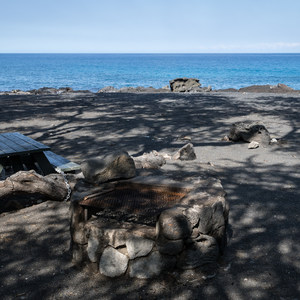Lapakahi State Historical Park is easy to miss on the way up through North Kohala on Highway 270 to Hawi, but this is a fascinating place that is well worth an hour or two of exploration. The site was once the location of a village that thrived on fishing and farming, and it also became a principal hub for trade between the inland and coastal people and towns up and down the coast. Residents enjoyed the relative calm of the Koai’s Cove along with plentiful ocean life, and a stone path led inland to crops of taro and sweet potato.
Today the site is a superb window into the lives these villagers lived some 600 years ago. Visitors to the park can walk through the village in two loops that total just less than a mile. Brochures available at the entrance station allow for a self-guided tour of the 262-acre park. You’ll see the remains of several structures that served as residences and temples, not to mention the many boulders that have been carved out for salt harvesting or kōnane, a checkers-like game that was played with pieces of rock and coral. Each structure by itself is impressive enough, but the cumulative effect of seeing all of these ruins together is much larger. As is the case at the Pu’uhonua O Honaunau National Historical Park or the nearby Pu’ukohola Heiau National Historical Site, walking among the ruins and reading about both the unique rituals and the daily lives of the Hawaiians hundreds of years ago is visceral, evocative, and memorable.
In addition to the state historical park, 146 acres of the sea just offshore is also recognized as a marine life conservation district, a designation that helps maintain the population of sea life that originally attracted. Corals, a big shore break, and strong currents make this a less than desirable spot for swimming, however.
Park hours are from 8 a.m. to 4 p.m., and there are no entries allowed after 3:30 p.m. This area is quite exposed, so it pays to explore the site in the morning or on a day when clouds or a breeze offer some respite from the sun. Also, it should go without saying that none of the ruins or artifacts here should be touched: Aside from a risk of injury from dislodged boulders, this area is profoundly culturally significant and deserves respect from its visitors.









Comments
Sign In and share them.